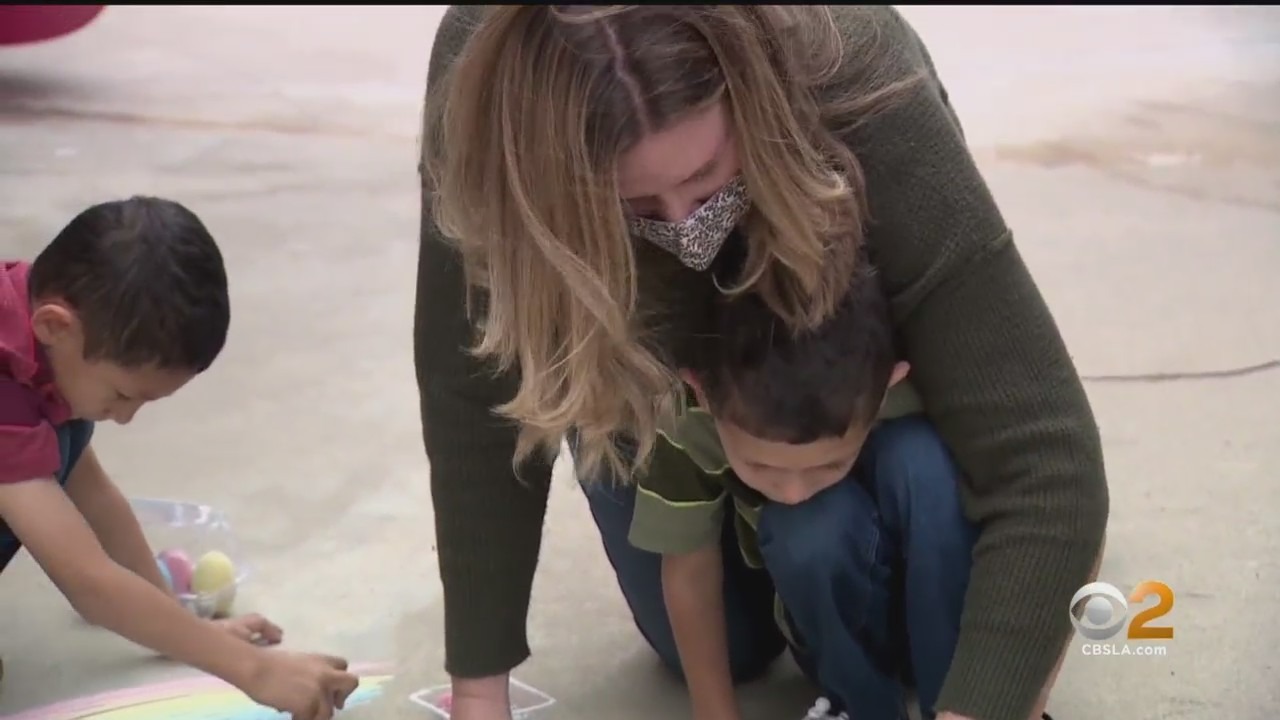LOS ANGELES (CBSLA) — The pandemic has been catastrophic for small businesses, and childcare centers are no exception with thousands closing their doors for good since last March.
“Once we opened, the stress was bringing everyone back,” Rodi Vogel, a preschool director, said. “Who wears the mask? Do the kids have to be separated in the classroom? How do they eat? How do they sleep? If one child gets it, does it spread? Do we close down?”
READ MORE: 29-Year-Old Mesa Verde Man Faces Felony Arson Charges
“A lot of directors and owners said this isn’t worth it anymore,” Kim Cordoba, a preschool director, said. “It’s too hard, it’s too much work, it’s too costly.”
In the past 14 months, more than 8,500 California childcare centers have permanently closed, taking with them thousands of spots for people who need care.
“I couldn’t sleep at night,” Wendy Bruns, a parent, said. “I was losing sleep. Who’s going to take care of my kids? It was stressful.”
The closures have added stress to a system that was already taxed.
“I think what we have is a crisis on top of the crisis we had before the pandemic,” Rasheed Malik, an analyst, said.
Malik works for the Center for American Progress as an analyst for early childhood policy. He said the cost of childcare has always been tough on families, but now it could get even worse.
“When the pandemic hit, these businesses were trying to basically operate at full capacity just to kind of cover their costs,” he said. “When people were trying to be safe, we had to go into lockdown, that necessitated fewer children in the same physical space. That meant fewer dollars coming in to pay those costs.”
In addition to a restricted enrollment, providers’ costs have increased as they work to keep classrooms safe and clean.
“This is not a high-profit industry, despite what a lot of people think,” Cordoba said. “We run lean margins.”
Cordoba runs the Plumfield Preschool in Santa Ana. She said pandemic restrictions have been extremely difficult.
“We have rebuilt a lot of our enrollment, but it’s still not where we needed to be because we were forced to make so many adjustments,” she said.
Cordoba said her profit margin has dropped about 40%.
And it’s not just getting the kids to come back that’s a struggle for these providers who said they were also having a hard time getting their staff to come back.
READ MORE: Teenager Struck By Vehicle In Seal Beach
“They either don’t feel safe, they’ve found other employment or it’s a situation that maybe they’re receiving unemployment and it’s equal to what they were making when they were teaching preschool,” Cordoba said. “If we can’t find staff, they can’t keep their doors open.”

Bruns took a leave of absence from her job, both to be there for her kids and because of the lack of available and affordable childcare. (CBSLA)
And now, as California has slowly started to open back up and people return to work, finding a spot at a childcare center has become even more difficult.
“Between the small children and the distance learners, they weren’t able to take on anymore children,” Bruns said.
Bruns is a single mom with 5-year-old twins. She is also a fourth grade teacher.
“It wasn’t even just about my own kids,” she said. “I had developed relationships with my students and I felt like if I wasn’t able to return I was going to be letting them down, so it was an impossible task. I’m either letting my family down or I’m letting my students down.”
Bruns took a leave of absence from her job, both to be there for her kids and because of the lack of available and affordable childcare.
And she’s not alone.
“Hundreds of thousands, if not millions, of moms especially have had to quit their jobs, not because they wanted to, but because somebody had to be at home with the kids,” Malik said.
But for the parents who are going back to work, childcare providers like Vogel want people to know that they are committed as ever to following protocols and putting children first.
“We had to learn all new rules, regulations,” The Boulevard School director said. “You have to feel safe. Don’t come to school if you’re not feeling safe. But you have to do what you’re comfortable doing.”
From restrictions and reopening to costs and closures, childcare in California is an issue that needs to be addressed. President Joe Biden has allocated nearly $40 billion to help the struggling childcare industry, but some say it might not be enough to bring the industry back — causing an even greater ripple effect.
“It’s going to make it very difficult for families to return to the workforce if they can’t find a space for their child to have quality care or if they can’t afford it,” Cordoba said.
As for childcare providers, they said some of the sites that have stayed open were hanging on by a thread and that another shutdown — or even a localized outbreak — could be the tipping point that would force them to close their doors for good.
Coverage of the childcare crisis continues 7 p.m. Thursday with a live town hall hosted by Kristine Lazar and Tom Wait to hear from people affected and those helping families streaming live on CBSNLA.
